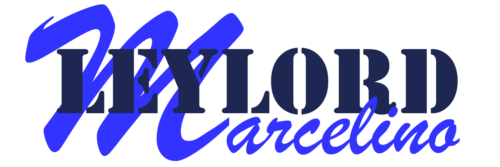
I have been attending a lot of webinars, and at the same time organizing and hosting webinars. I love how an ordinary webinar can be extraordinary and how it can be an effective demand generation strategy and a way to connect and engage customers through virtual events.
To some, it may look easy, but to have a successful webinar also requires good planning and strategy. I will be sharing a few points, that we need to consider in planning and executing webinars, to have a more productive and meaningful event.
What is webinar?
A webinar is an interactive virtual or online or web-based event, seminar, or conference. Through webinars, we can provide resources to engage and share information with our customers and target customers, and we are not limited to a physical event venue to broaden our reach. By doing webinars, not only that we are saving costs on venues, but we are also saving the time of our audience and resource speakers to travel and be at our event. Webinars are excellent tools to grow our marketing capabilities, increase our demand generation, and create leads beyond the walls of your business, and deliver content.
A webinar can be an 8-in-1 modern marketing strategy
Here are some topic ideas to consider before setting up a webinar
How long should be a webinar?
Considering these ideas above, we also need to keep in mind the length or duration of webinars depending on your program. While some webinar attendees don’t mind longer webinars, it is equally important to find ways to engage with your audience and make sure to have enough time for a Q&A session.
Webinar platforms options
There are various platforms to choose from, and your choice may depend on the purpose, type of webinars you are hosting, and audience size.
These can be used as team collaboration and webinar hosting at the same time:
Other webinar platforms:
Steps in creating a webinar
Now that you have the basic things to know about a webinar, it’s time to create your own webinar.
Plan
Promote
Deliver
Measure
Analyze data and make actionable points to improve execution for future webinars – How many people were invited, registered, attended, and sources of registration.
Quick Tips and takeaways
According to BrightTALK, the average engagement per webinar is 39 minutes.
While the average viewing time for webinars is at 43 to 48 minutes not including the 10 to 15-minute Q&A.
According to On24, the best days to hold a webinar is during mid-week, during Tuesday, Wednesday or Thursday.
Depending on the audience locations, the best time to run a webinar is between 10 am to 12 noon and 1 pm to 3 pm.
Leverage social media and SEO as an organic strategy. You may also read my article “Know the SEO basics”
Keep invitations short and concise, personalized, and include the speaker’s bio. Your speaker’s profile and connection might also attract more attendees.
Don’t forget to have a dry-run or practice session.
And lastly, run a speed test, make sure that the internet connection of the Host or presenters is stable to ensure a better webinar experience.
***
Digital is the way forward; we cannot deny that. But traditional marketing is not yet dead, the best approach in a successful marketing campaign is to implement an integrated marketing strategy that works for you. What best works for others might not always be the best fit for you too. So start creating your own journey, pick the best working strategies, and implement the right mix to achieve an optimized marketing strategy.

Leylord is a Senior Marketing Leader, Marketing Consultant, Certified Digital Marketer. Provides Digital Marketing Services, SEO Services, WordPress Web Development, Demand Generation Services. Helps organizations build brand, generate demand & inbound leads that convert to revenue through successful data-driven marketing strategies.
Leylord is an Experienced & result-oriented Senior Marketing Leader in the Technology, Architecture, Engineering & Construction (AEC) industries, a digital transformation advocate & visionary, with a degree in engineering. A certified digital marketer with a strong background & extensive experience in executing data-driven integrated marketing strategies; managing end-to-end marketing operations; & bridging the gap between traditional & digital marketing successfully. Having an engineering background, being analytical & technical, I'm always excited by emerging digital transformation trends, challenges, designing solutions, & always believed in data-driven decision making.
